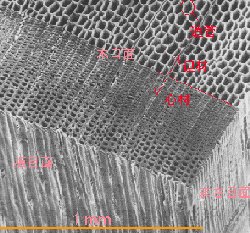第二に、直接体験(経験)される感覚的対象、即ち、我々が椅子やテーブルや太陽や月などを見るときに我々が見るものは、我々の精神の諸部分であって、我々が見ていると思っている物理的対象の全体あるいは部分(そのもの)ではない。(また)私が(今)言っているこの部分は新しいものではなく、バークリーから出て(に由来し),ヒュームによって補強されたものである。けれども、私がこの考えを支持するために使っている議論(論拠)は、厳密に言うとバークリーのもの(と同じ)ではない。多くの人が単一の対象を異なった角度から眺めれば、彼らの視覚的印象は、遠近法(laws of perspective)や、光の投射する仕方によって異なることを指摘したい。,従って,視覚的印象はいずれも,彼らのすべてが自分が見ていると思っている中立的な「物 "thing"」ではない(のである)。また、物理学は,対象から発して我々の感覚器官に達する因果連鎖(causal chains)を信じこませることを,また,この因果連鎖の最後の(連鎖の)環が最初の環と正確に同じだったとすれば大変妙だということを、を指摘したい。(注:「link 環」というのは,たとえば、多くの丸い環(わ)を数珠つなぎしていったようなイメージ)
|
 Second: sensible objects, as immediately experienced, that is to say, what we see when we see chairs and tables and the sun and the moon and so on, are parts of our minds and are not either the whole or part of the physical objects that we think we are seeing. This part of what I am saying is also not new. It comes from Berkeley, as reinforced by Hume. The arguments that I should use for it, however, are not exactly Berkeley's. I should point out that if a number of people look at a single object from different points of view, their visual impressions differ according to the laws of perspective and according to the way the light falls. Therefore no one of the visual impressions is that neutral "thing" which all think they are seeing. I should point out also that physics leads us to believe in causal chains, starting from objects and reaching our sense organs, and that it would be very odd if the last link in this causal chain were exactly like the first.
Second: sensible objects, as immediately experienced, that is to say, what we see when we see chairs and tables and the sun and the moon and so on, are parts of our minds and are not either the whole or part of the physical objects that we think we are seeing. This part of what I am saying is also not new. It comes from Berkeley, as reinforced by Hume. The arguments that I should use for it, however, are not exactly Berkeley's. I should point out that if a number of people look at a single object from different points of view, their visual impressions differ according to the laws of perspective and according to the way the light falls. Therefore no one of the visual impressions is that neutral "thing" which all think they are seeing. I should point out also that physics leads us to believe in causal chains, starting from objects and reaching our sense organs, and that it would be very odd if the last link in this causal chain were exactly like the first.
|

